In most countries, cohabitors report lower levels of relationship quality as compared to married couples.However, the quality gap (between cohabitors and married people) is largest in countries wherecohabitation is less prevalent. Cross-national differences in the acceptance and prevalence of cohabitationmay therefore have an influence on how cohabitators perceive the quality of their relationship.It may contribute to making them more, or less, similar to married people.
Prevalence of cohabitors and relationship quality gap between cohabitors and married people (age 18 to 55)
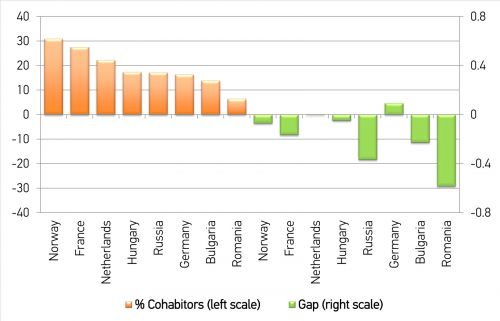
In most countries, cohabitors report lower levels of relationship quality as compared to married couples.However, the quality gap (between cohabitors and married people) is largest in countries wherecohabitation is less prevalent. Cross-national differences in the acceptance and prevalence of cohabitationmay therefore have an influence on how cohabitators perceive the quality of their relationship.It may contribute to making them more, or less, similar to married people.
Prevalence of cohabitors and relationship quality gap between cohabitors and married people (age 18 to 55)

You may know that loneliness is more prevalent amongst older people than younger people but did you know that loneliness levels also vary across countries? Data from the GGP illustrate that both older and younger age groups show higher levels of loneliness in Eastern Europe than those in Western Europe. Eastern European societies have experienced rapid societal and economic changes. These have often resulted in increased economic inequalities, poverty and psychological stress, each affecting the risks for loneliness.
Loneliness on the De Jong Gierveld Short Scale across 7 Countries
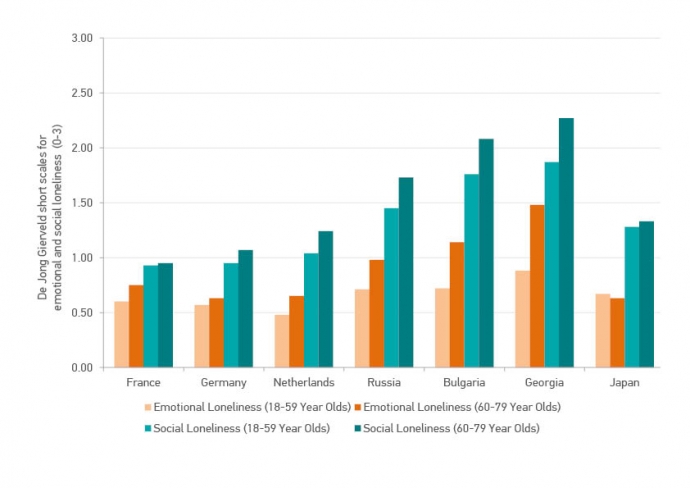
Strong family ties can diminish people’s likelihood of having depressive feelings by providing material and non-material resources. Having both parents alive, having not experienced the divorce of one’s parents, and having siblings were all found to reduce the risk of having a depressive mood. Being married was found to have a particularly protective effect (after controlling for education, employment status, and financial situation). Moreover, this effect was found to be stronger in Eastern than in Western European countries suggesting that a more supportive welfare state can buffer the impact of not being married on one’s depressive mood.
Impact of marital status on the likelihood of having a depressive mood among adults age 18-79 in Eastern and Western European countries
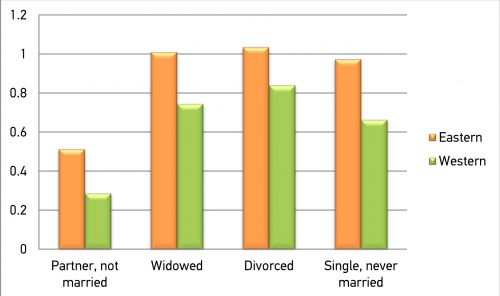
The presence of children is associated with greater inequality in the gender division of housework among couples in France, western Germany, and eastern Germany. In all three cases, couples with children share housework tasks less equally than their childless equivalent. However, major cross-national differences exist when it comes to the age of children. While in western Germany the inequality is largest when young children are present, and slightly improves thereafter, the exact opposite pattern is observed in France.
Gender division of housework by age of the youngest child
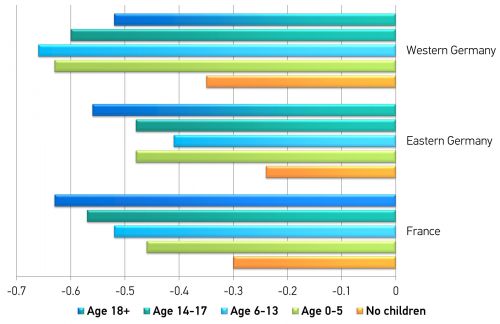
Since the year 2000, a total of about 680 papers or reports based on GGS data have been published or presented at conferences. This includes more than 200 articles in scientific journals and 21 PhD theses. As of 2012, the GGP counts close to 600 registered projects, up from 100 in 2009!
Number of bibliographical units using GGP as the data source
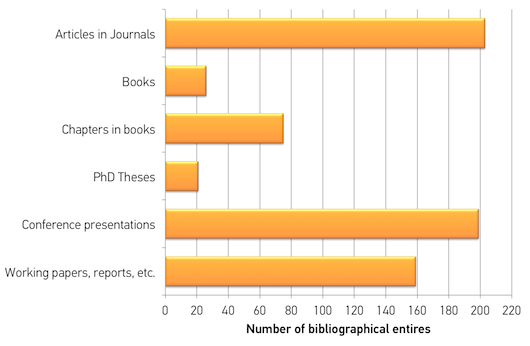
Fill the form below with your contact information to receive our monthly GGP at a glance newsletter.
